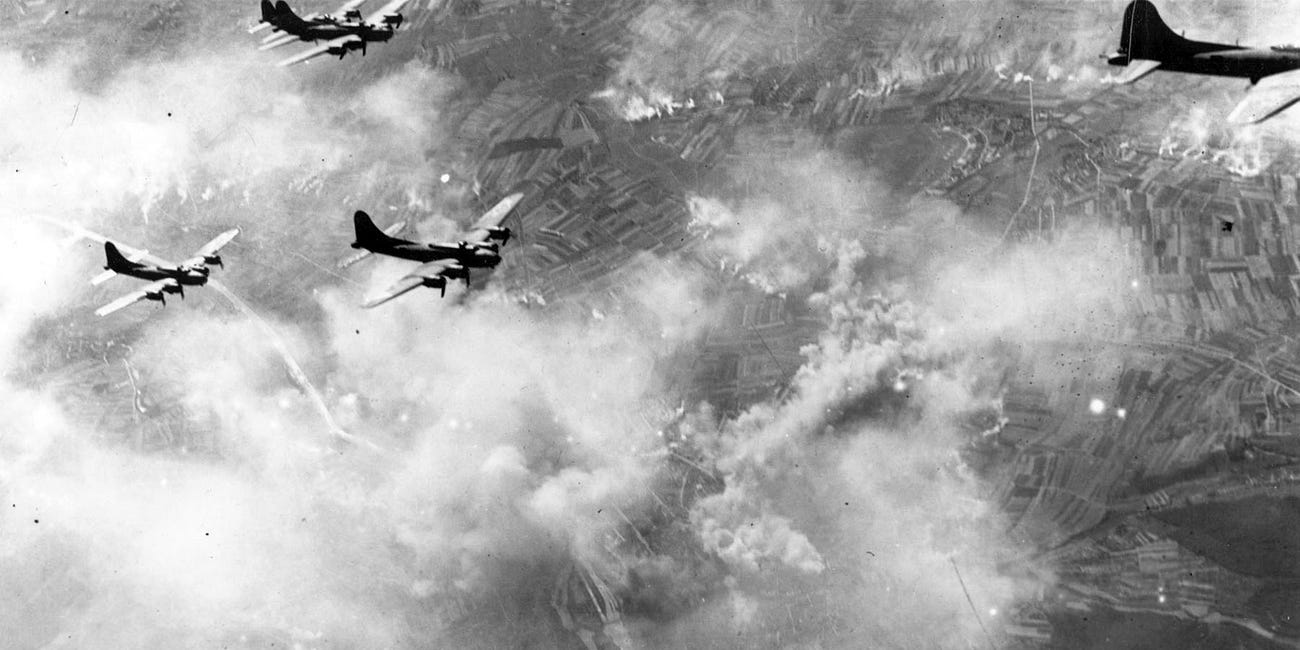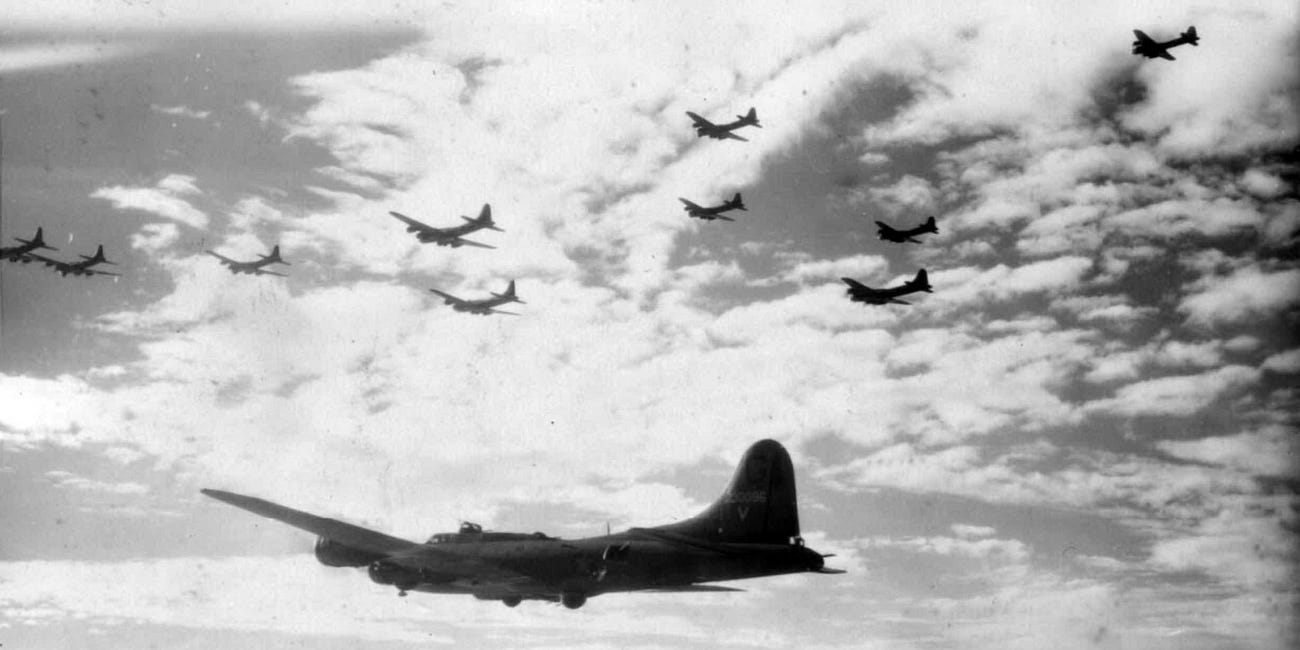Bombing Germany in 1943 - the 8th Air Force
The trials and tribulations of the 'Mighty Eighth' as it builds up its capacity to bomb Germany from hastily built bases in England

The second half of 1943 was a difficult time to be flying with the 8th Air Force based in Britain. They were pushing to hit important strategic targets in Germany and beyond - but they suffered heavy casualties in doing so. Gradually things began to improve …
1st August 1943: USAAF B-24s fly into an array of defences and fighter aircraft to attack the critical Romanian oil refinery
Heavy casualties in Ploesti raid
The strategic bombing campaign aimed to throttle both German industry and her armed forces of their petroleum. Rumania supplied around one-third of the oil used by Germany - so her oilfields were an obvious target. The USAAF had made one modest attempt to attack the main production site at Ploesti, in May 1942. That attack, designed to make use of thirteen aircraft that had originally been destined for Burma, had caused little damage. It did, however, put the Germans on notice that Ploesti was on the target list for further visits. Very soon, given its strategic importance, the air defences around the site were dramatically improved, with dozens of 88mm guns and a range of smaller calibre weapons, many of them concealed in buildings.
17th August 1943: One in six of the B-17s bombing a German ball bearing plant are shot down, as the 8th Air Force tries new tactics
USAAF suffers over Schweinfurt-Regensburg
A year after the 8th Air Force had mounted its first raid on occupied Europe, the American heavy bomber force in England had grown enormously and was still growing. But early optimism that the heavy armament of the B-17s - especially when they were mutually supporting each other in formation - would be enough to deter enemy fighters had proved to be misplaced.
27th September 1943: The P-47 Thunderbolt makes its appearance alongside the B-17 bombers of the 8th Air Force in Europe, along with the P-51 Lightnings
USAAF fighters surprise the Luftwaffe
In the bombing war against Germany, the early expectation that the USAAF Flying Fortresses would be sufficiently well-armed to defend themselves had proven to be misplaced. Furthermore, the Germans had been quick to re-organise their air defences to cope with attacks from the RAF at night and the USAAF by day.
13th November 1943: Extending the range of the escort fighters is crucial to protecting the heavy bombers of the 8th Air Force
USAAF fighters go all the way
Daylight bombing attacks on Germany continued to grow. The 8th Air Force had endured heavy losses during their 'black fortnight' in October, beginning with the Marienburg Raid. They were hitting the targets but the accompanying losses were unsustainable, especially on the second Schweinfurt raid on 14th October when they lost 26 per cent of the bombing aircraft.
See Also:
8th December 1943: The trials of a new USAAF Bomber Group in England





